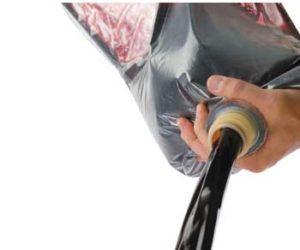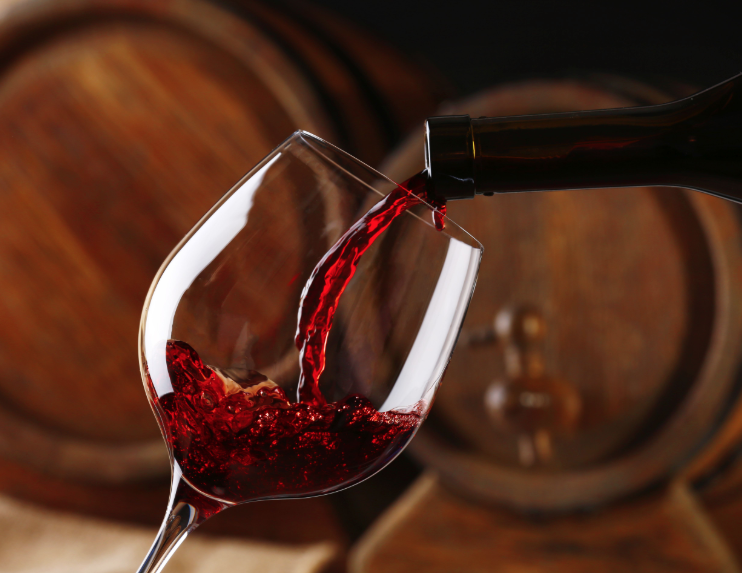Malbec makes great varietal wines (check out the feature on page 40 for advice on this approach), but is also commonly used as a blending component, specifically for Bordeaux-style blends. In Bordeaux, Malbec is often a smaller component of wines that rely heavily on Cabernet Sauvignon and Merlot, and sometimes used in conjunction with the other Bordeaux red varieties of Cabernet Franc, Petit Verdot, and Carménère. Malbec can also be a complementary pairing with other grapes depending on what characteristics you are looking for. We asked two West Coast winemakers for their insight on making blends with Malbec to help you on your way to blending success.

Soren Christensen is the Winemaker at Hearst Ranch Winery in Paso Robles, California
Our Malbec is planted just up the east bank of the Salinas Riverbed. The Salinas has a subterranean flow for most of the year, so our vines are planted in very sandy, dry soil. With the meager water-holding capacity of the sandy soil, our vines are very reactionary to irrigation and have amazing concentration when water is carefully rationed. Our Malbec yields wines of incredible aromatic and flavor expression that tend to be a touch thin in regard to texture.
All our wines are aged as single varietals with blending taking place in the weeks preceding bottling. Aging of our Malbec wines is usually 18 months in predominantly neutral oak barrels.
Our Malbec is amazing at elevating the aromatic profile of wines. In addition to Malbec, we do bottlings of Cabernet Sauvignon, Cabernet Franc, Petit Verdot, and Merlot. More often than not, all of these wines have at least a touch of Malbec to perk up the nose. I love the levity that Malbec brings to the nose and front end of the palate.
When blending with richly structured wines like Cabernet Franc and Petit Verdot you can get away with adding a fair amount of Malbec without sacrificing too much texture. For instance, we use 20% Malbec in our 2015 The Point Proprietor’s Reserve Boudeaux-style blend — just behind Cabernet Sauvignon (35%), and the same as Petit Verdot and Merlot.
With the exception of needing our Malbec blend to be at least 75%, I never begin blending trials with any percentage goals. Because it can be so vibrant up front, it can quickly change the profile of a blend if you put in too much. Viognier is the same when blending white Rhône varietals . . . you want some in there, but you don’t always want it to take over.
When considering the best pairings, I will say that Malbec and Petit Verdot do fantastic together. Much in the way that Malbec is bright and engaging up front, our Petit Verdot shows its strength towards the backend of the palate. Our Malbec bottling typically has some Petit Verdot to lengthen the palate on the backend and our Petit Verdot bottling typically has some Malbec to do the same on the front.
Getting a little off topic on the conversation of blending Malbec, I would like to offer some final advice for Malbec production. There might be Malbec out there that has an amazing tannin profile but ours certainly does not. With that being said, I give it a fairly mild, low temperature fermentation to keep it bright and fresh. We typically pump over our Malbec once a day, there’s no point in trying to extract structure that isn’t there.

Jeremy Santo is the Winemaker at Mercer Family Vineyards in Prosser, Washington
All of our Malbec comes from our estate Vineyards on the Horse Heaven Hills American Viticultural Area (AVA) in southeastern Washington. The Malbec that comes from our vineyards is very rich and ripe in flavors but has nice dusty/powdery tannins, which are balanced out nicely by bright acidity. Very elegant but also full, with a rich mouthfeel. We have amazing aromas from our Malbec, with lots of bright red fruit and undertones of violets and savory herbs.
Our Malbec grapes are 100% barrel aged with 20–25% consisting of new French and American oak.
Malbec in red blends provides amazing fruit-forward aromas and flavors. The violet/savory herb flavor aroma components add a layer of complexity. Malbec pairs well with more tannic/bigger Bordeaux varietals such as Merlot and Cabernet Sauvignon. We like to blend with Malbec to polish the big tannins of Merlot and Cabernet Sauvignon while still contributing mid-palate sweetness. Malbec can make up 5–25% of the blend depending on the vintage.
Outside of the traditional Bordeaux-style blends, Syrah pairs well with Malbec in Washington red blends. Syrah adds nice fruit-forward jamminess to the mid-palate as well as adding notes of blueberry pie and baking spices. We may use anywhere from 5–25% of Syrah in our Malbec varietal wines. If Syrah is the star of the blend, we have used it for up to 50–60% of the wine.
We have also produced Malbec wines with complementary additions of Cabernet Sauvignon, which adds nice structure and tannin to the wines, adding a little more texture to build the mid-palate.
Malbec is an amazing grape to work with. Don’t be afraid to extract during fermentation, whether you are doing pumpovers or punchdowns. Malbec has big berries and can use more extraction. If barrel aging, I prefer a smaller amount of new oak (~20–25%). Malbec has amazing bright fruit aromatics and flavors and too much oak will cover those characteristics.







